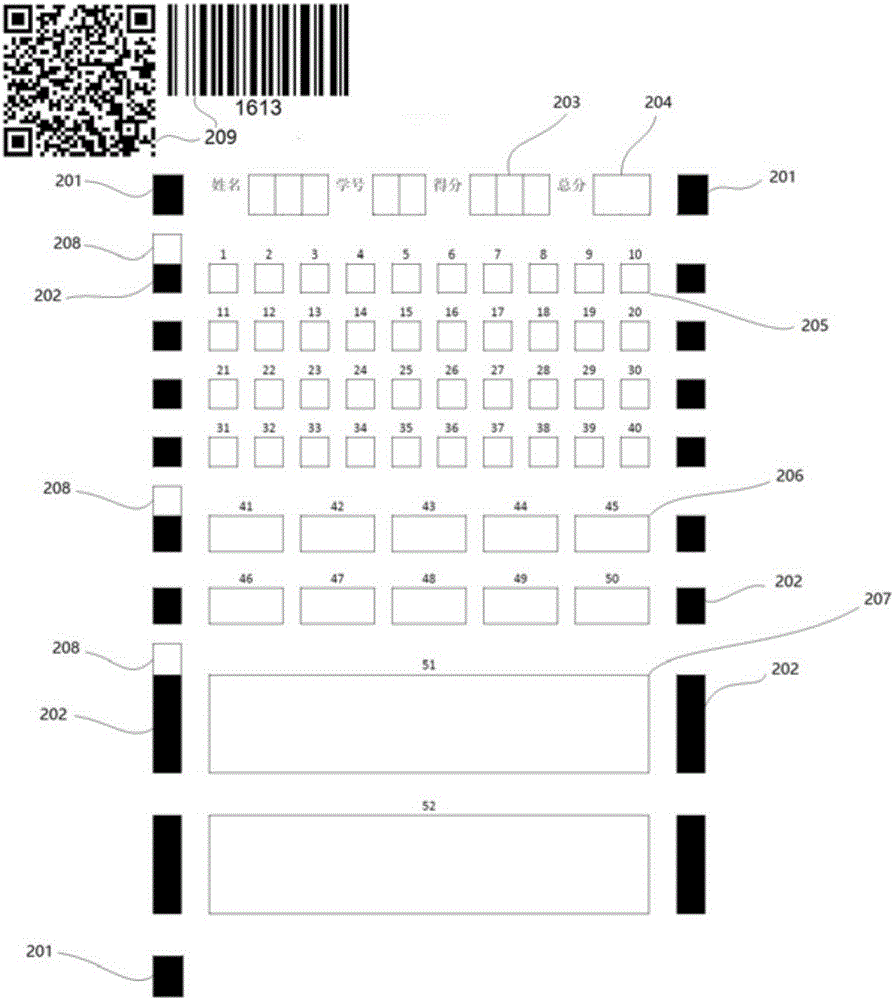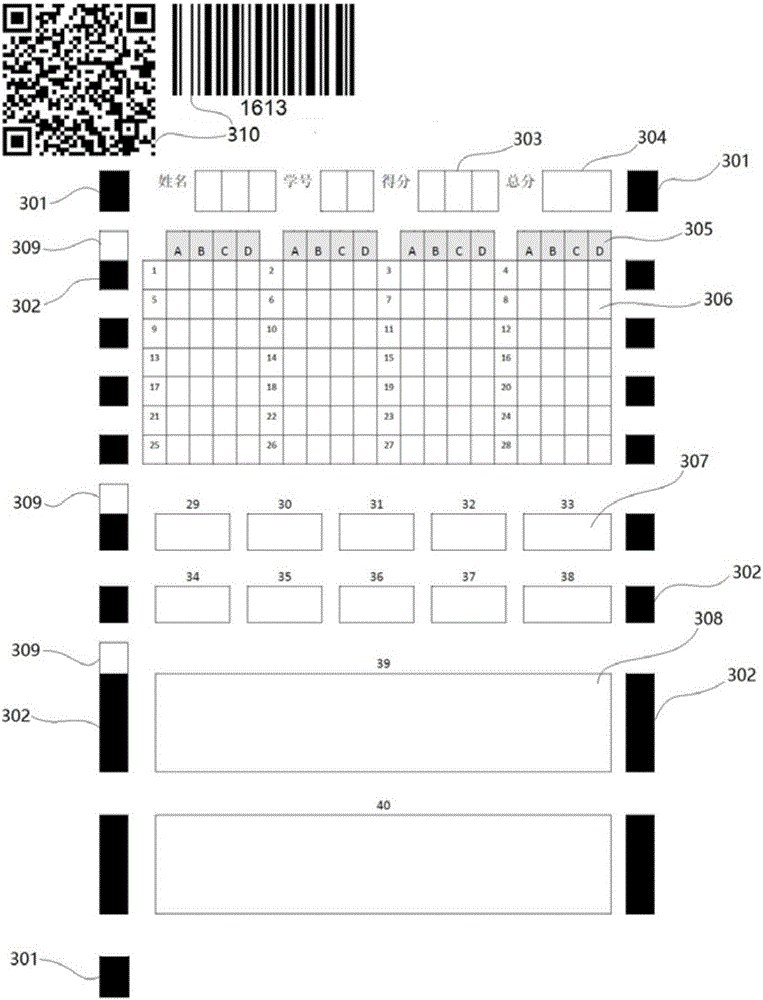Intelligent correction system
An intelligent, test-question technology, applied in the direction of instruments, character and pattern recognition, and electric-operated teaching aids, to achieve the effect of improving work efficiency, improving learning efficiency, and low cost
- Summary
- Abstract
- Description
- Claims
- Application Information
AI Technical Summary
Problems solved by technology
Method used
Image
Examples
Embodiment Construction
[0098] The present invention will be described in detail below with reference to the accompanying drawings and the embodiments thereof, but the protection scope of the present invention is not limited to the scope described in the embodiments.
[0099] like figure 1 As shown, the intelligent correction system in this embodiment includes: a test paper generation device 1 , an image acquisition device 2 and a test paper identification and review device 3 .
[0100] The question paper generation device 1 and the question paper identification and review device 3 can be implemented on a cloud server, and the image acquisition device 2 can be a scanner, a camera or other user-end equipment.
[0101] The test paper generation device 1 includes an online test question registration system 1-1, answer paper cloud storage 1-2, and test question database 1-3, and the test paper identification and review device 3 includes: an intelligent image recognition and judgment system 3-1, and onlin...
PUM
 Login to View More
Login to View More Abstract
Description
Claims
Application Information
 Login to View More
Login to View More - R&D
- Intellectual Property
- Life Sciences
- Materials
- Tech Scout
- Unparalleled Data Quality
- Higher Quality Content
- 60% Fewer Hallucinations
Browse by: Latest US Patents, China's latest patents, Technical Efficacy Thesaurus, Application Domain, Technology Topic, Popular Technical Reports.
© 2025 PatSnap. All rights reserved.Legal|Privacy policy|Modern Slavery Act Transparency Statement|Sitemap|About US| Contact US: help@patsnap.com



